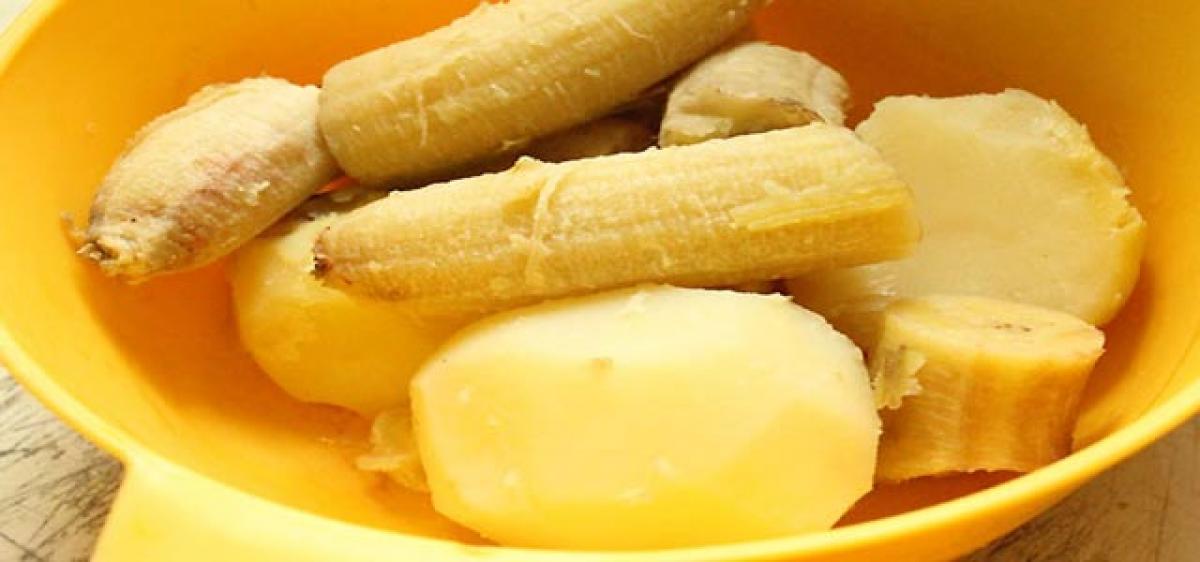Why starch in bananas, potatoes may be good for health

Consuming foods such as bananas, potatoes, grains and legumes that are rich in resistant starch may help check blood sugar, enhance satiety as well as improve gut health, a study has found.
Consuming foods such as bananas, potatoes, grains and legumes that are rich in resistant starch may help check blood sugar, enhance satiety as well as improve gut health, a study has found. Resistant starch is a form of starch that is not digested in the small intestine and is therefore considered a type of dietary fibre.
"We know that adequate fibre intake at least 30 grams per day -- is important for achieving a healthy, balanced diet, which reduces the risk of developing a range of chronic diseases," said Stacey Lockyer, Nutrition Scientist at British Nutrition Foundation, a Britain-based charity.
Apart from occurring naturally in foods, resistant starch is also produced or modified commercially and incorporated into food products. Unlike the typical starch, resistant starch acts like a type of fibre in the body as it does not get digested in your small intestine, but is is fermented in the large intestine.
This dietary fibre then increases the production of short chain fatty acids in the gut, which act as an energy source for the colonic cells, thus improving the gut health and increasing satiety. According to the researchers, there is consistent evidence that consumption of resistant starch can aid blood sugar control. It has also been suggested that resistant starch can support gut health and enhance satiety via increased production of short chain fatty acids.
"Whilst findings support positive effects on some markers, further research is needed in most areas to establish whether consuming resistant starch can confer significant benefits that are relevant to the general population. However, this is definitely an exciting area of nutritional research for the future," Lockyer said. The study was published in the journal Nutrition Bulletin.



















